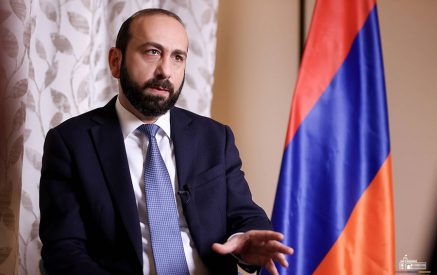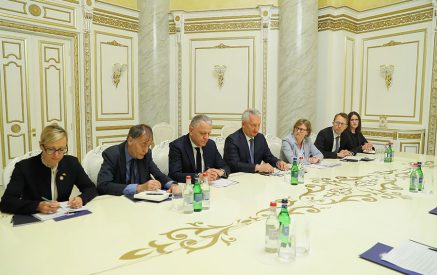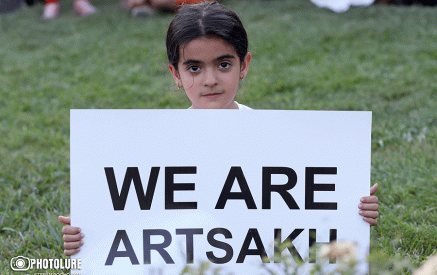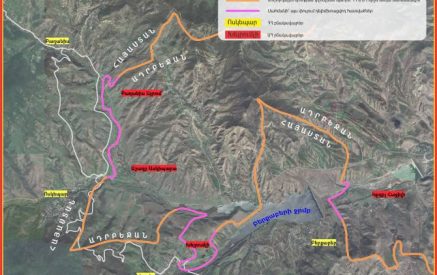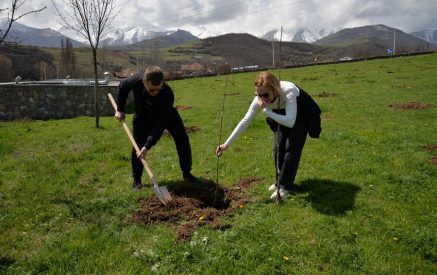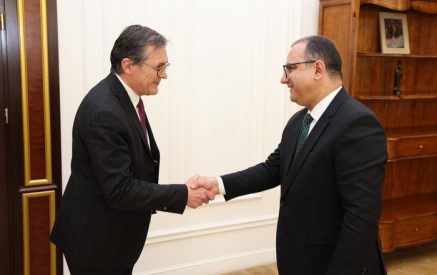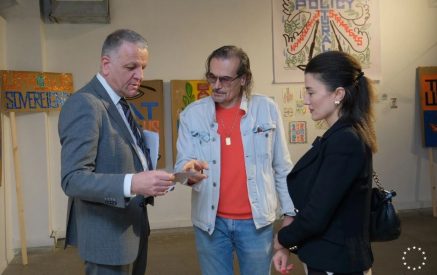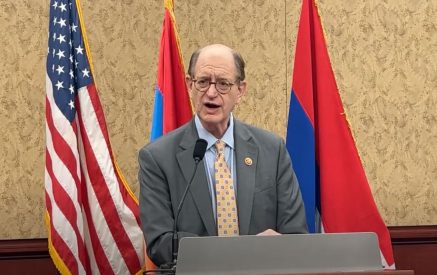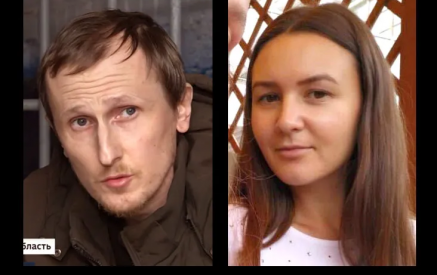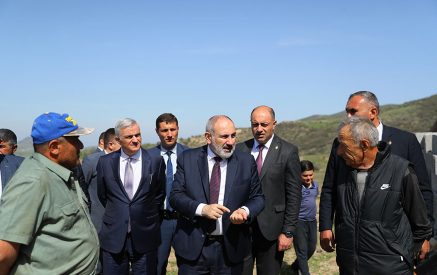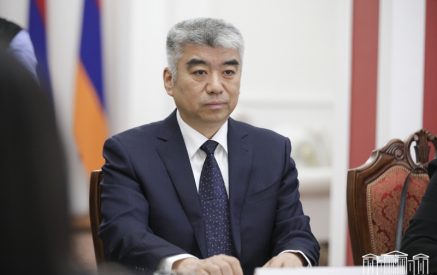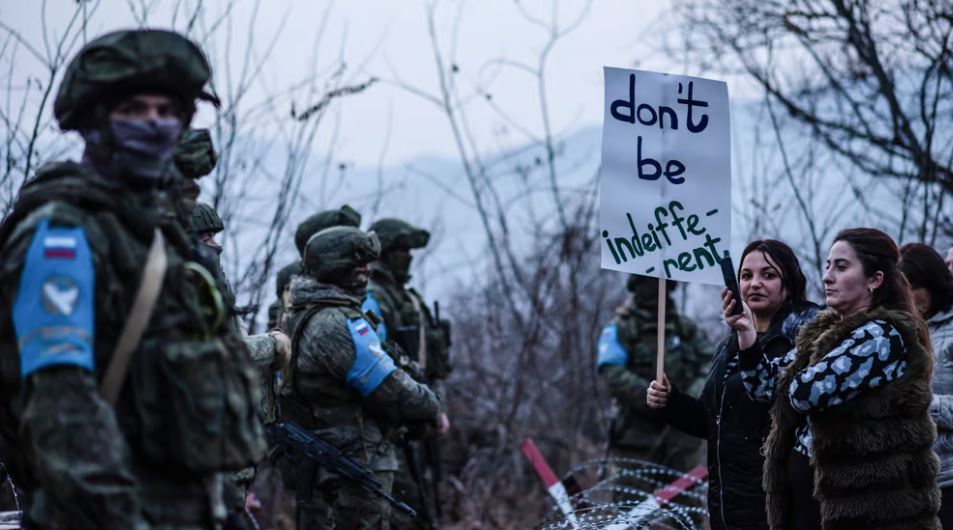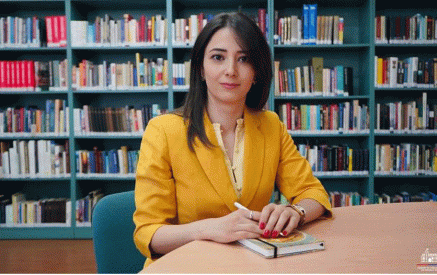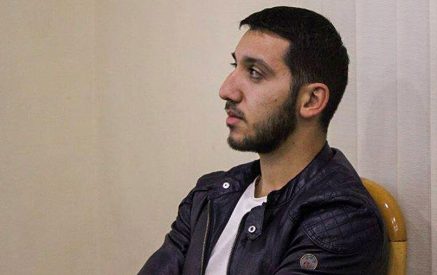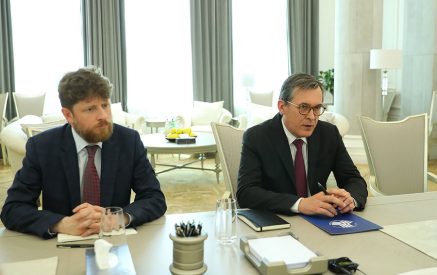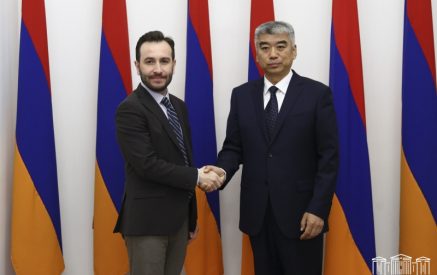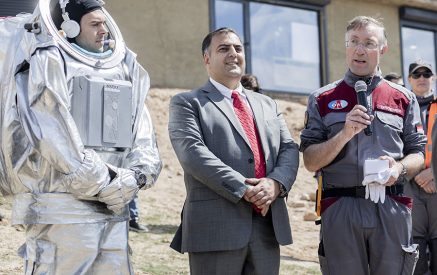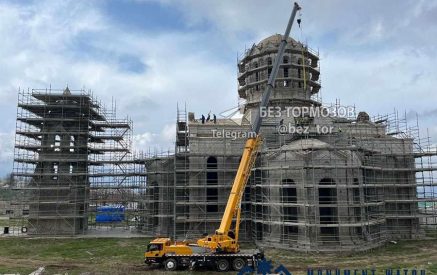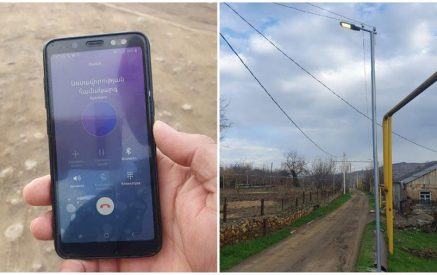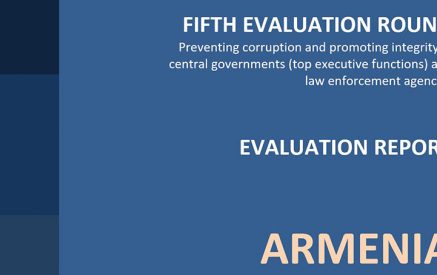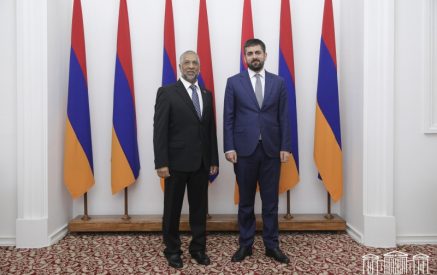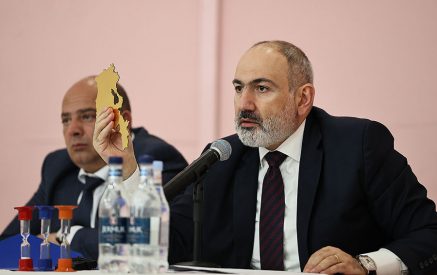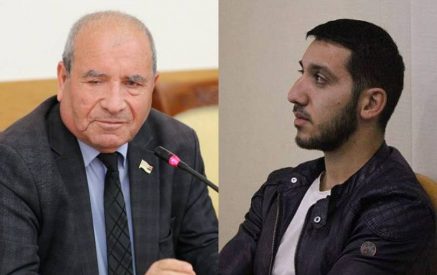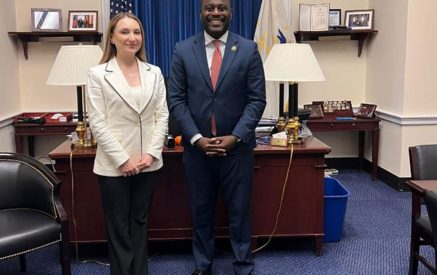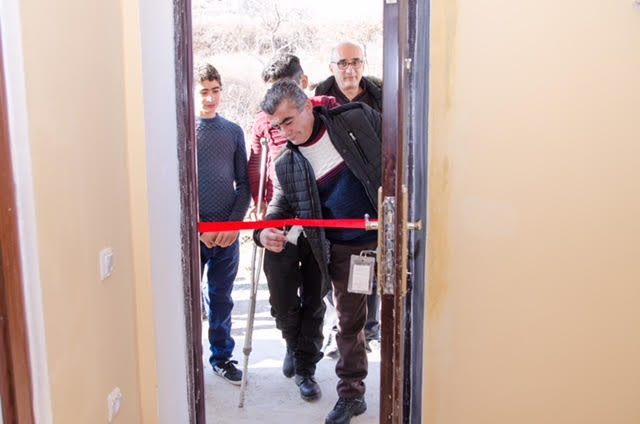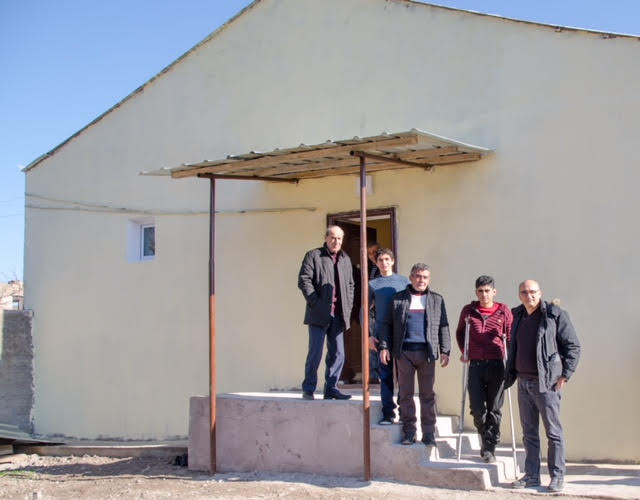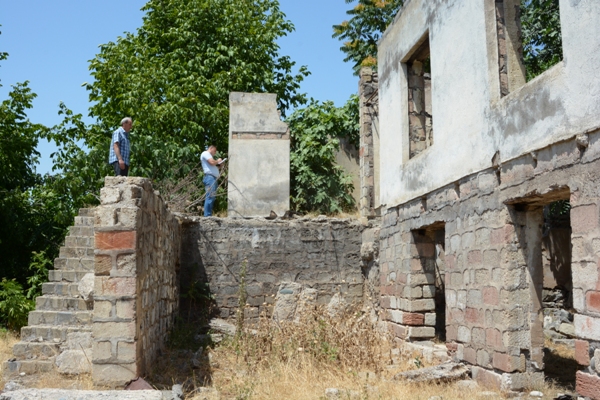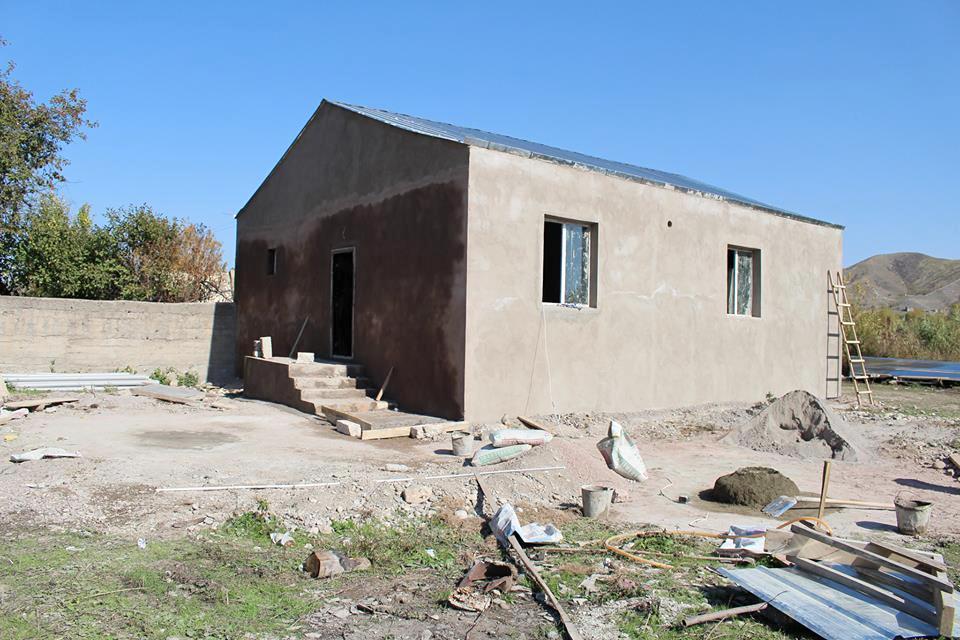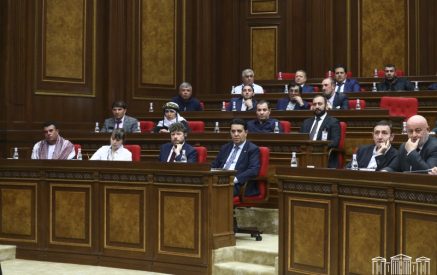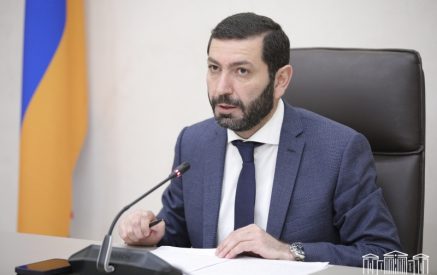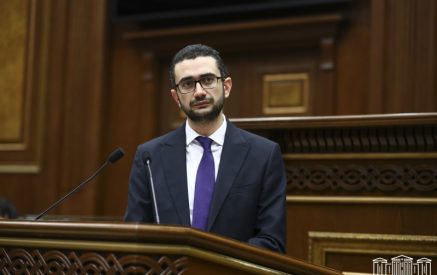December 25, Stepanakert: A Lebanese-Armenian family – Vahe Askaryan and his four children – who resettled in Artsakh in 2015, celebrated housewarming today in the Ishkhanadzor Village of the Kashatagh region. The house has been built by the Tufenkian Foundation in the framework of its Resettlement of Kashatagh initiative. Among other efforts, the project provides housing support to Armenians relocating to Kashatagh from Syria and Lebanon.
Kashatagh Administration Chief of Staff Davit Davtyan, Tufenkian Foundation Executive Director Raffi Doudaklian, as well as representatives of the Artsakh Ministry of Healthcare, Berdzor Hospital and the Ishkhanadzor community attended the opening event.
Kashatagh (formerly Lachin) is the vital land-bridge connecting Artsakh to Armenia, making them effectively one. This liberated region guarantees Karabakh’s existence and has strategic significance for the peace and security of Armenians everywhere. After 70 years of Azerbaijani rule, the historic Armenian province was liberated during the Karabakh war and is now being actively resettled. However, while Kashatagh offers new life, the region suffered immensely from the war and has been facing a housing and infrastructure crisis ever since.
To address this, the Tufenkian Foundation began a pilot project in 2008 to renovate existing houses in Kashatagh’s villages. During 2008-2010, more than 40 renovation works were performed by dedicated work brigades, under TF’s supervision. Since 2010, TF has continued with house renovation, but focusing more on special needs – provision of housing support to Armenian families from Syria and Lebanon who resettle in Kashatagh.
Vahe Askaryan is the second re-settler from the Middle East to receive a home from the Tufenkian Foundation during 2017. In early June, the family of Haig Khatcho, a Syrian-Armenian doctor who escaped ISIS persecution and resettled in Artsakh a couple of years ago, celebrated housewarming in the same village.
To provide a new home to Vahe’s family, the Tufenkian Foundation turned some of the war-torn ruins of Ishkhanadzor into a large and safe house. The construction efforts were carried out by local workers from Kashatagh and lasted over 5 months.
Addressing the guests at the ceremony, Vahe Askaryan said “Relocating to Artsakh, this ancestral home of all Armenians, is the best decision I could make for my family. I am happy to experience such generous support by my compatriots and promise to dedicate all my abilities for the prosperity of Artsakh”.
Vahe is a skilled farmer with experience in greenhouse cultivation. To support the family while they start a new life in Artsakh, the Tufenkian Foundation has provided Vahe with a greenhouse. Upon effective utilization, the greenhouse can not only ensure the subsistence of Vahe’s family, but also create employment opportunities for others in Iskhanadzor.
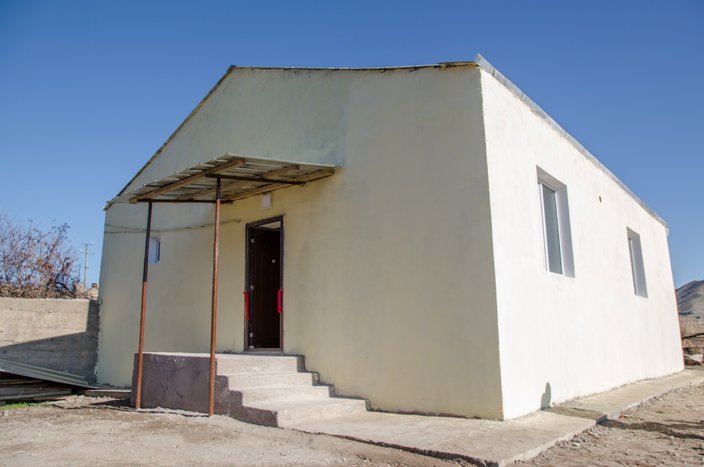
In parallel to building a house for Vahe and his family, the Tufenkian Foundation has renovated the primary clinic of Iskhanadzor. Built by TF in 2006, the clinic serves 16 villages in Kashatagh and is an important part of the local infrastructure.
Rebuilding, resettling and developing Kashatagh is an important part of the Tufenkian Foundation’s work in Artsakh and will be carried on throughout the foreseeable future.
About the Tufenkian Foundation
The Foundation was launched in 1999 by entrepreneur James Tufenkian with the mission to empower the initiatives of local citizens, support the most vulnerable strata of the society, promote environmental protection and awareness, and advance social justice in Armenia. Since 2003, the Foundation has broadened its scope to embattled Nagorno-Karabagh, where it promotes resettlement and development projects in the vulnerable border zones of the region.
Press release

